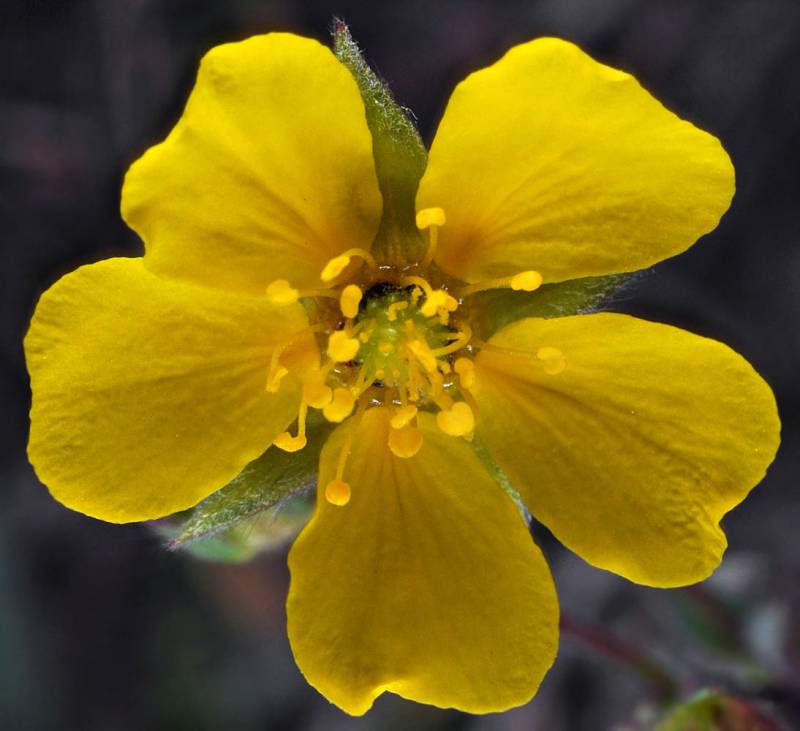Potentilla glaucophylla
Potentilla supina
blueleaf cinquefoil, different-leaved cinquefoil, diverse-leaved cinquefoil, vari-leaved cinquefoil
bushy cinquefoil
Leaves mostly basal, palmately or pinnately divided, the blades with 5 main leaflets and 1-2 remote, reduced, entire leaflets; main leaflets triangular-toothed to deeply dissected into narrowly oblong segments, usually silky-gray on the lower surface;
cauline leaves 1-2, reduced;
stipules 1-2 cm. long.
Leaves pinnate, the lower ones with 2-4 pairs of elliptic to oblong leaflets with rounded serrations, 1-3 cm. long, the upper sometimes ternate;
stipules well-developed.
Inflorescence open, many-flowered;
calyx saucer-shaped, silky, up to 1.5 cm. wide in fruit, the 5 lobes triangular-lanceolate, 4-6 mm. long, alternating with linear, shorter bracteoles;
petals 5, yellow, obcordate, 6-9 mm. long;
stamens 20;
pistils numerous, style slender, equaling the fruit and attached just below the tip.
Flowers solitary on long peduncles from the leaf axils throughout the upper half of the plant;
calyx stiff-hairy, 5-9 mm. broad, the 5 lobes ovate-triangular, 3-4 mm. long, erect;
petals 5, yellow, obovate, about equal to the sepals;
stamens usually 20, sometimes less;
pistils numerous;
style terminal, equaling the ovary.
Achene 1.3-1.6 mm. long, weakly net-veined.
Achenes 1.2 mm. long with a wedge-shaped thickening on one edge about the size of the rest of the fruit.



